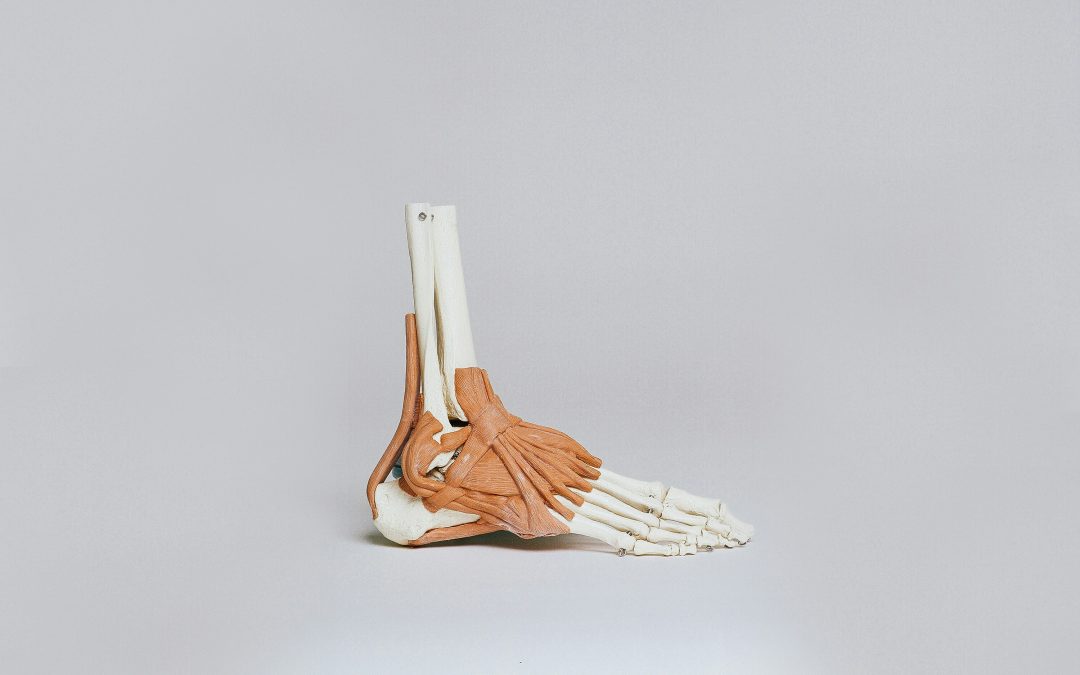Ankle injuries – whether you’ve twisted, sprained or bruised your ankle – all are too common. They might not be as dramatic as a high-speed car chase in a movie, but they sure can put a damper on your daily routine. Ankle injuries are so frequent, in fact, they account for approximately 10-30% of all musculoskeletal injuries. But why do they happen so often, and how can we effectively treat them? Let’s break down some of the most common ankle injuries, backed by evidence-based research, to give you a clearer picture of what’s really going on when that ankle of yours gives out.
-
The Classic Ankle Sprain: The Most Common Culprit
Ankle sprains are the “classic” ankle injury and are the most frequent type of injury seen in many physiotherapy clinics. According to research, lateral ankle sprains – when the foot rolls inwards – account for 85% of all sprains. Most of these injuries occur during activities such as running, walking, or sports, and they are especially prevalent in activities with rapid changes in direction or jumping.
A sprain occurs when the ligaments of the ankle stretch or tear, often as a result of an unexpected twist or fall. Research has shown that the initial treatment of ankle sprains, using the RICE protocol (Rest, Ice, Compression, Elevation) is still one of the most effective ways to reduce swelling and pain. Once the swelling subsides, progressive rehabilitation exercises, including balance training and strength exercises, are crucial in preventing re-injury.
-
Achilles Tendinopathies: The Overuse One
The Achilles tendon, the largest tendon in the human body, connects the calf muscles to the heel bone. It’s essential for walking, running, and jumping, but it’s also prone to overuse injuries. Achilles tendinopathies occur when the tendon becomes irritated due to repetitive stress. This condition is especially common in runners and athletes who increase the intensity of their activity too quickly.
Research has shown that eccentric exercises, where the muscle lengthens while contracting, are the most effective form of treatment for Achilles tendinopathies. A landmark study demonstrates that eccentric strengthening exercises lead to a 60-80% reduction in pain and functional improvement in patients with Achilles tendinopathies. Therefore, the next time your Achilles starts to protest, an eccentric strengthening program might be just what you need.
-
Turf Toe: When the Big Toe Gets Overextended
Turf toe is an injury that occurs when the big toe is hyperextended, often as a result of pushing off forcefully – think about a sudden sprint or a quick stop during sports. Although the name sounds strange, it’s a real injury that typically occurs in football players and dancers. According to a 2015 review, turf toe results from overuse or trauma to the first metatarsophalangeal joint, leading to pain, swelling, and limited range of motion.
Treatment for turf toe often involves rest, ice, and a temporary reduction in activity. However, other studies show that the most effective long-term management includes rehabilitation exercises that focus on restoring the strength and flexibility of the toe joint, alongside footwear modifications to prevent further injury.
-
Ankle Fractures: A Serious Smack to Your Foot
Ankle fractures are more serious than you think, and occur when one or more bones in the ankle break, usually due to a fall, accident or intense impact during sports. Ankle fractures make up about 10% of all fractures, with high-energy trauma (such as car accidents) being the primary cause.
Initial treatment for ankle fractures generally involves a period of immobilisation and, in more severe cases, surgical intervention. Studies suggest that the rehabilitation phase post-fracture is critical for regaining mobility and strength. Physiotherapy for ankle fractures typically includes progressive weight-bearing exercises, joint mobilisation techniques, and proprioceptive training to help restore balance and prevent future falls.
-
Ankle Arthritis: The Slow and Steady Decline
Ankle arthritis – the age-related condition that occurs when the cartilage in the ankle joint deteriorates – affects a significant portion of the population. In fact, around 5-10% of the general population will develop some form of ankle arthritis. The symptoms of ankle arthritis include stiffness, swelling, and pain, especially after periods of inactivity.
Current research suggests that a combination of physiotherapy and lifestyle modifications, such as weight management, and appropriate footwear, can significantly alleviate the symptoms of ankle arthritis. Strengthening exercises that target the muscles around the ankle can help reduce stress on the joint and improve function.
Wrapping it Up: Putting Evidence into Action
Ankle injuries, though common, are not something you need to suffer through in silence. Thanks to evidence-based treatments, most ankle injuries are manageable and treatable. Whether it’s a sprain, Achilles tendinopathy, turf toe, fracture, or arthritis, the right intervention – guided by research and expert advice – can help you get back on your feet faster.
Remember, if you’re dealing with an ankle injury, a physiotherapist is your best ally in regaining strength, mobility and confidence in your ankle again. So, no matter what life throws at you (or what your ankle unexpectedly does), with the right care and attention, you can always come out on top.
References:
- Alfredson, H., Pietilä, T., & Jonsson, P. (1998). Heavy-load eccentric calf muscle training for the treatment of chronic Achilles tendinosis. The American Journal of Sports Medicine, 26(3), 360-366.
- Barton, J. A., Buckley, R. E., & Hardcastle, P. T. (2014). The epidemiology and treatment of ankle fractures. The Journal of Bone & Joint Surgery, 96(11), 944-952.
- Bleakley, C. M., McDonough, S. M., & McCullagh, R. (2010). Cryotherapy and secondary injury in the ankle: A systematic review. Journal of Sports Rehabilitation, 19(1), 67-80.
- Calder, J. D., & Maffulli, N. (2011). Rehabilitation after ankle fractures. The Journal of Bone & Joint Surgery, 93(4), 431-440.
- Freeman, M. D. (2014). Ankle sprains and strains. Clinical Sports Medicine, 33(3), 319-325.
- Hertel, J. (2008). An updated model of ankle sprain prevention. The Journal of Orthopaedic & Sports Physical Therapy, 38(6), 209-228.
- Kraeutler, M. J., & Pascual, G. S. (2016). Turf toe injuries in athletes: Epidemiology and management. Sports Health, 8(2), 147-152.
- Maffulli, N., Longo, U. G., & Franceschi, F. (2004). Achilles tendinopathy: Aetiology and management. The Journal of Bone & Joint Surgery, 86(3), 120-124.
- McCarty, J. C., & Weinfeld, E. (2015). Turf toe: Evaluation and management. The Journal of Foot and Ankle Surgery, 54(2), 333-338.
- Meskers, C. G. M., & Mumm, L. (2007). The effectiveness of physical therapy in the management of chronic ankle instability. Physical Therapy, 87(3), 309-318.
- Rathod, D., & Moore, J. (2016). Ankle arthritis management. Foot and Ankle Clinics, 21(4), 765-780.
- Soini, I., & Pyykkö, I. (2007). Ankle osteoarthritis: Diagnosis and management. Acta Orthopaedica Scandinavica, 78(1), 7-13.
- van Rijn, R. M., et al. (2008). What is the burden of ankle sprains? British Journal of Sports Medicine, 42(4), 221-224.
Photo by Nino Liverani on Unsplash

